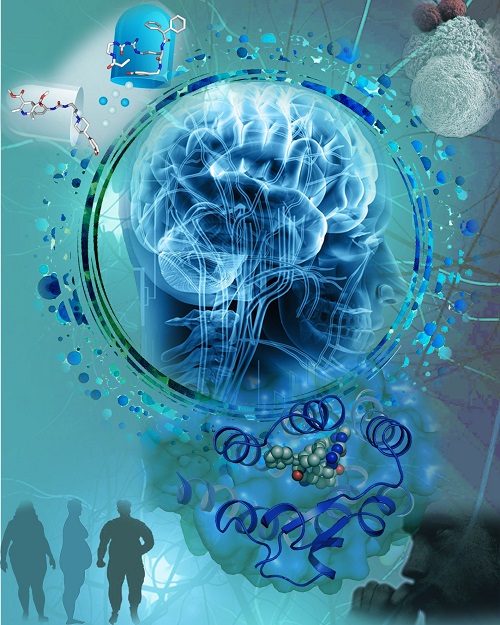
-Structures of human neuropeptide Y receptor Y1R reveal drug recognition mechanisms
Obesity is a major public health concern. Each year, millions of people die from obesity related diseases.
As a highly abundant neuropeptide in central nervous system, neuropeptide Y (NPY) was found to be the most powerful stimulant of food intake and this effect is primarily mediated by the Y1 receptor (Y1R), one of four identified NPY receptors in human. Thus, Y1R serves as an important drug target for human diseases, such as obesity, type 2 diabetes and metabolic syndrome.
However, the clinical usage of Y1R ligands has been hampered by low potency and selectivity, poor brain penetration ability or lack of oral bioavailability.
Recently, scientists from the Shanghai Institute of Materia Medica (SIMM) of Chinese Academy of Sciences, in collaboration with several groups based in Germany, United States, China and Sweden, determined the high-resolution atomic structures of human Y1R bound to two structurally diverse antagonists UR-MK299 and BMS-193885. The finding, published online in Nature, provided insights into the pharmacology of NPY receptors and offered new opportunities for anti-obesity drug discovery.
The Y1R structures revealed, for the first time, the molecular details of a NPY receptor binding to its ligand at atomic level, and provided an accurate template for drug design targeting Y1R. The structures combined with mutagenesis, ligand binding and signaling studies elucidated the binding modes of Y1R to various antagonists and the molecular mechanisms of ligand selectivity in different NPY receptors.
The NPY-Y receptor system is one of the most complex networks with three peptide ligands (NPY, peptide YY and pancreatic polypeptide) binding to four receptors with different affinity and selectivity. Based on the Y1R structure, scientists performed extensive studies including complementary mutagenesis, cell signaling, nuclear magnetic resonance, molecular docking and photo-crosslinking.
The results provided insights into the binding behavior of the endogenous agonist NPY to Y1R, and for the first time identified the binding site of NPY N terminus, which is critical for receptor selectivity, in Y1R. They expanded the understanding of NPY receptor signal transduction and laid a foundation for carrying out structure-based drug discovery that targets this physiologically important receptor.
"The Y1R structures and our functional studies help us understand how this receptor bind to different types of ligands with molecular details. This can enable development of new anti-obesity drugs with better selectivity and efficacy,” said the team leader and SIMM Prof. WU Beili.
The study was funded by Chinese Academy of Sciences, the National Science Foundation of China, the European Community, the Free State of Saxony (Germany), the Deutsche Forschungsgemeinschaft (DFG), National Institute of Health (U.S.A.) and National Science Foundation (U.S.A.).

Figure: The crystal structure of Y1R binding to an antagonist UR-MK299. The receptor is shown in blue cartoon and surface representations. The antagonist UR-MK299 is shown as grey spheres. (Image by Dr. WU Beili’s group)

86-10-68597521 (day)
86-10-68597289 (night)

86-10-68511095 (day)
86-10-68512458 (night)

cas_en@cas.cn

52 Sanlihe Rd., Xicheng District,
Beijing, China (100864)

